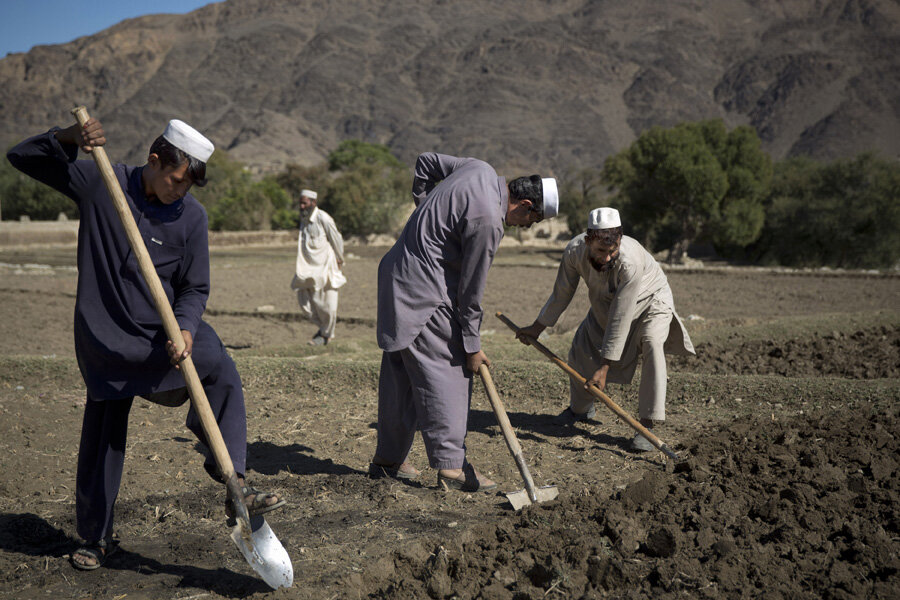What did $7 billion spent on opium eradication in Afghanistan buy? More opium.
Loading...
With the outcome of Afghanistan's controversial presidential election still in doubt, and uncertainty over Afghan forces' ability to stand against the Taliban after most US forces withdraw, it's hard to say with certainty what the US-led war there has accomplished, or failed to accomplish.
But one thing is clear, as shown by latest quarterly report from the US Special Inspector General on Afghanistan Reconstruction: The $7 billion US program to eradicate poppy cultivation there over the past decade has been a flop.
The country is today the world's largest supplier of opium, the purified latex sap from the Papaver somniferum poppy species that is usually then converted into heroin. It accounts for about three-quarters of the global recreational supply, and surging Afghan production is one reason why street heroin prices have been falling across the globe.
What has the anti-opium effort in Afghanistan yielded US taxpayers?
The latest (United Nations Office of Drugs and Crime) Opium Survey estimates that 209,000 hectares are under opium-poppy cultivation, an all-time high and a 36% increase from 2012.
This expansion occurred despite the goal outlined in Afghanistan’s draft National Drug Control Strategy for 2012–2016 of reducing the cultivation of poppy by 50% from its 2011 baseline of 131,000 hectares. Eighty-nine percent of the opium fields are located in nine provinces in the country’s southern and western regions... Opium cultivation has significant social, political, and economic repercussions for the country and the region. The drug trade undermines the Afghan government because it funds the insurgency, fuels corruption, and distorts the economy.
Money and politics go together pretty much everywhere, and while in a country like the US that means that Wall Street bankers and Silicon Valley billionaires wield outsized influence, in Afghanistan that means drug traffickers, who often appear to have very cozy ties with senior officials.
So much for the supply side. How about domestic demand?
The most recent Afghanistan National Urban Drug Use Survey, conducted by State’s Bureau of International Narcotics and Law Enforcement Affairs (INL), in 2012 estimated the number of adult drug users (aged 15 years and older) above 1.3 million, or more than 7.5% of the population. An earlier 2009 UNODC survey shows how the problem has been increasing. The 2009 survey estimated that one million Afghans were dependent on drugs.
UNODC surveys have shown a climb in regular opium usage from 150,000 users in 2005 to approximately 230,000 in 2009 (a 53% increase). Meanwhile, regular heroin users had grown from 50,000 in 2005 to approximately120,000 in 2009 or 140% increase. The 2009 UNODC survey also revealed a high number of parents—as high as 50% in the north and south of the country—providing opium to their children.
To be fair, trying to wipe out opium production in Afghanistan would have been a Sisyphean task no matter what strategy was deployed. It's a lucrative business, and poppies are easily cultivated, generating far more money for poor farmers and corrupt middlemen than any feasible substitution crop. During the height of the American counterinsurgency effort, winning over the general population to the side of the government and foreign forces was a big focus. The US found that tearing up crops and impoverishing farmers wasn't very popular.
The early eradication strategy was largely abandoned in favor of going after big opium dealers and encouragng farmers to grow other crops. But that really hasn't worked, either. The country's opium and heroin trade is a top earner, and with the military effort winding down, the business opportunities associated with aid and foreign military spending are set to decline.
Afghanistan's opium lords are not likely to go anywhere.








